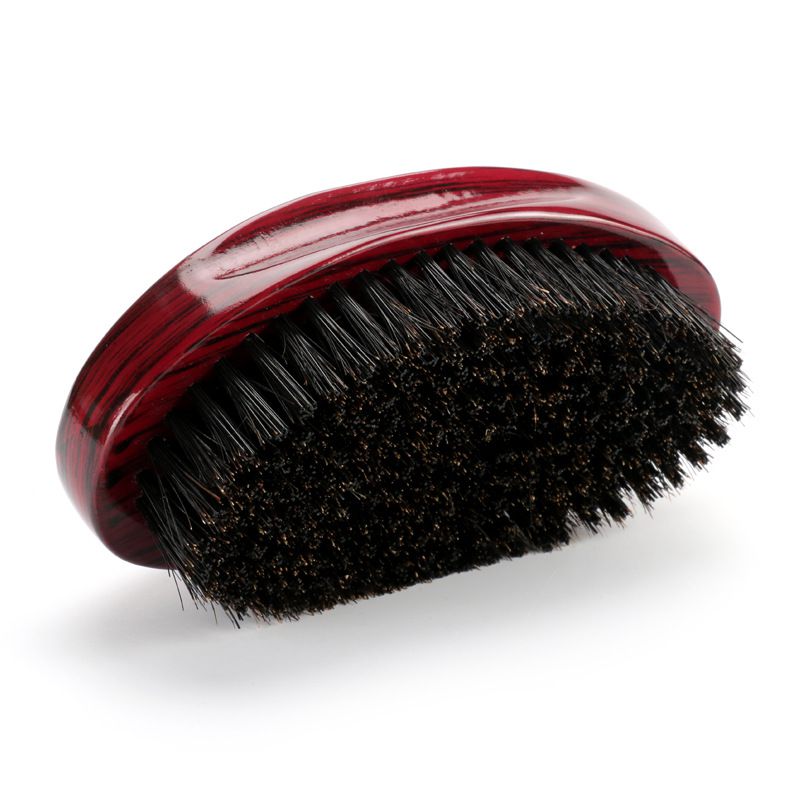Industry news
How Shaving Brush Design Affects Skin Exfoliation
- 473 Views
- 2025-10-13 02:32:13
How Shaving Brush Design Affects Skin Exfoliation
A close, comfortable shave isn’t just about the razor—it’s a symphony of tools working to prep the skin, and the shaving brush plays a starring, yet often overlooked, role in exfoliation. Beyond creating a rich lather, the brush’s design directly influences how effectively dead skin cells are lifted and removed, leaving the skin smoother and primed for剃须. Let’s break down the key design elements that shape this process.
Bristle Material: The Foundation of Exfoliation

The choice between natural and synthetic bristles is the first design decision impacting exfoliation. Natural bristles, such as badger or boar hair, have inherent structural advantages: their surface is covered in microscopic scales, similar to human hair, which create gentle friction when swirled across the skin. Badger hair, particularly higher grades like super badger, often features a mix of bristle lengths (from stiff guard hairs to soft undercoat), allowing it to both lift dead skin and generate a dense lather that traps and removes debris. Boar hair, while coarser, offers robust exfoliation for those with thicker, oilier skin.
Synthetic brushes, once dismissed as inferior, now rival naturals in exfoliation thanks to engineered fibers. Modern synthetic filaments (like those made from PBT or nylon) can be tapered to a fine point, mimicking the softness of badger hair, while their uniform structure ensures consistent performance. Some brands even add micro-textures to the fiber surface, enhancing their ability to grip and dislodge dead skin without irritation. For sensitive skin, synthetic brushes often win: they’re hypoallergenic, dry faster (reducing bacterial buildup that can exacerbate irritation), and offer controlled exfoliation—no surprise they’re gaining traction among eco-conscious users too.
Bristle Density: Pressure and Precision
Density, or the number of bristles packed into the brush head, dictates how the brush interacts with the skin. High-density brushes (think 200+ bristles per square centimeter) create a firm, springy cushion. When you swirl such a brush, the bristles resist splaying, maintaining close contact with the skin. This concentrated friction is ideal for thorough exfoliation, lifting dead skin from pores and smoothing rough patches. Barbers often prefer high-density brushes for clients with thick facial hair, as the added pressure also helps soften whiskers.
Low-density brushes, by contrast, have more space between bristles, allowing them to flex and bend. This results in gentler, diffused friction—perfect for sensitive or easily irritated skin (like post-shave or during winter). The tradeoff? Less intense exfoliation, but a more comfortable experience for those prone to redness.
Bristle Length and Loft: Flexibility vs. Firmness
The length of the bristles (measured from the ferrule, or metal base, to the tip) and the loft (the “height” of the bristle bundle) work together to determine bristle stiffness. Shorter bristles with low loft are stiffer and more rigid; they don’t bend easily, so each bristle tip applies direct pressure to the skin. This makes them excellent for targeted exfoliation—say, around the jawline or chin, where dead skin can accumulate.
Longer bristles with higher loft, on the other hand, are more flexible. They splay slightly during use, distributing pressure across a larger area. This creates a softer, more sweeping exfoliation, ideal for larger facial areas like the cheeks. For those new to wet shaving, longer-bristle brushes are forgiving: they reduce the risk of over-exfoliation by spreading friction evenly.
Brush Head Shape: Contouring to the Face
The shape of the brush head—whether dome, fan, or flat-topped—determines which areas of the face receive the most exfoliation. Dome-shaped heads, the most common design, curve gently to follow facial contours (cheeks, jaw, neck). This ensures uniform contact, making them great for all-over exfoliation. The rounded top prevents sharp edges from irritating sensitive spots, balancing effectiveness and comfort.
Fan-shaped heads, with their flatter, wider profile, excel at targeted exfoliation. The longer bristles on the edges can reach into creases (like under the nose or along the jawline) with precision, applying extra friction where dead skin tends to linger. Barbers often use fan-shaped brushes to “detail” these areas, ensuring no patch is missed.
The Takeaway: Design for Your Skin
Shaving brush design isn’t one-size-fits-all. For oily, resilient skin, a high-density, short-bristle natural brush (like a boar hair dome) will deliver deep exfoliation. Sensitive or dry skin benefits from a low-density, long-bristle synthetic brush, offering gentle yet effective dead skin removal. And for those who want versatility? A medium-density, dome-shaped synthetic brush with tapered fibers hits the sweet spot—balanced exfoliation, easy maintenance, and skin-friendly performance.
In the end, the best shaving brush for exfoliation is one that aligns with your skin’s needs. By understanding how material, density, length, and shape work together, you can turn your daily shave into a revitalizing skincare ritual—one that leaves your skin not just smooth, but truly refreshed.











